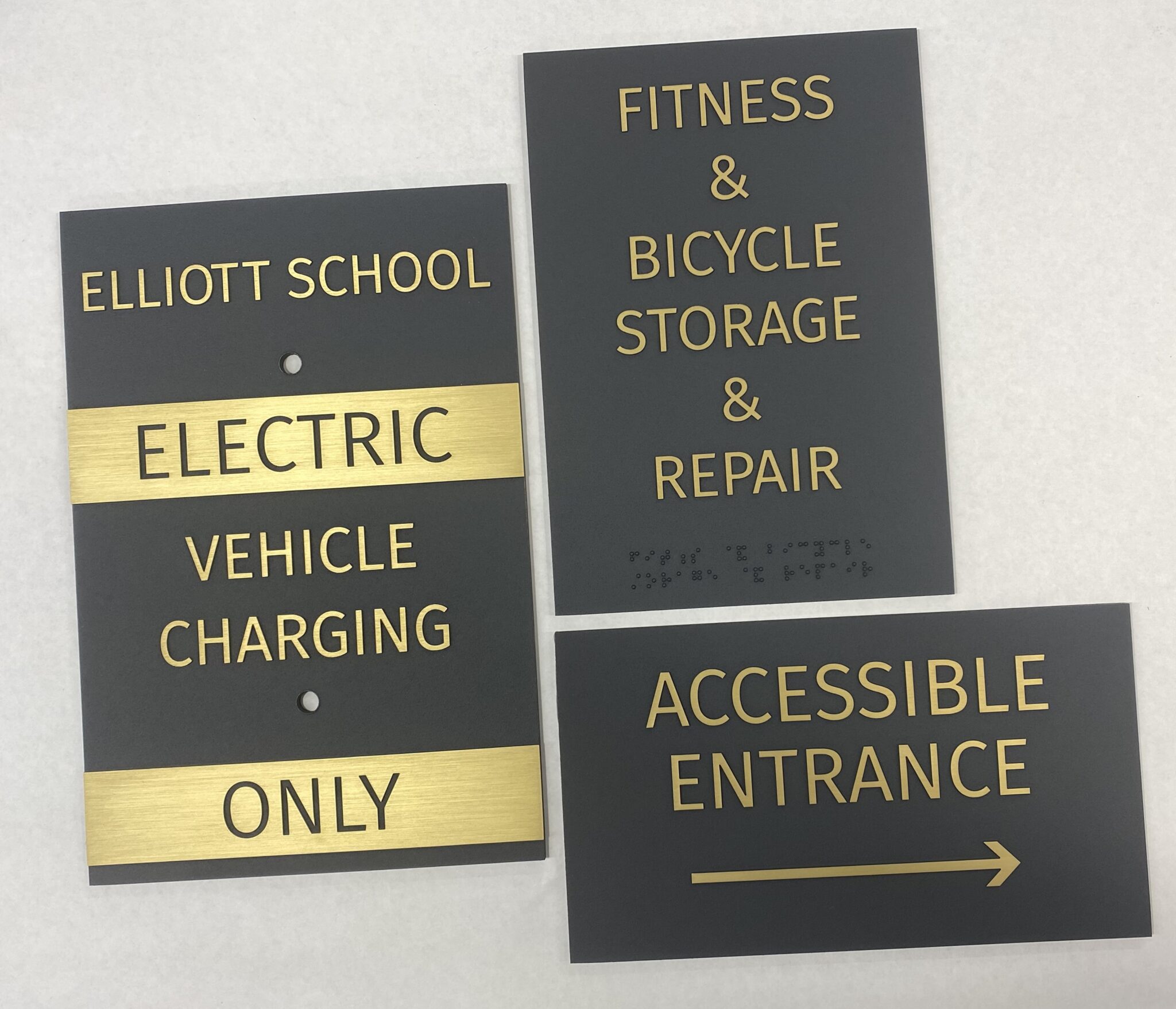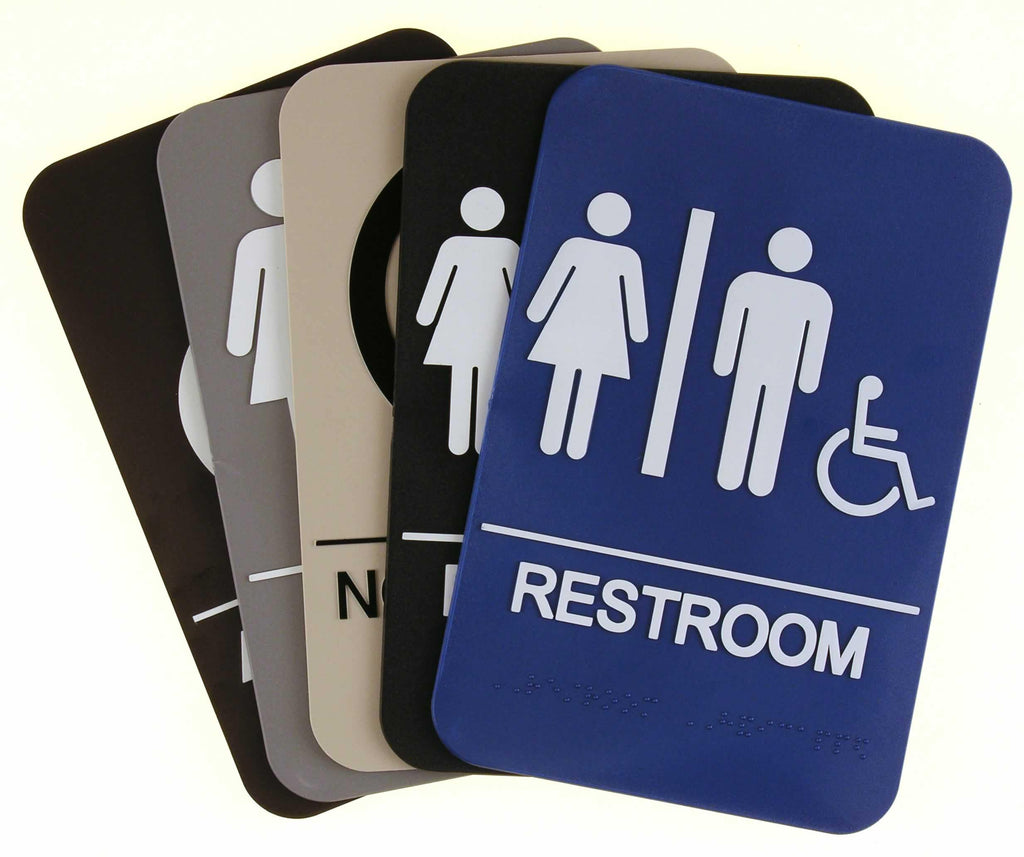The Benefits of Using Top Quality ADA Signs in Your Business
The Benefits of Using Top Quality ADA Signs in Your Business
Blog Article
Exploring the Key Functions of ADA Indicators for Enhanced Ease Of Access
In the world of availability, ADA indicators serve as quiet yet effective allies, making sure that rooms are inclusive and navigable for individuals with specials needs. By integrating Braille and responsive elements, these indicators damage barriers for the aesthetically impaired, while high-contrast color systems and legible font styles provide to diverse visual requirements.
Importance of ADA Compliance
Making certain compliance with the Americans with Disabilities Act (ADA) is critical for promoting inclusivity and equivalent accessibility in public spaces and offices. The ADA, passed in 1990, mandates that all public facilities, companies, and transport services fit people with disabilities, ensuring they take pleasure in the very same civil liberties and opportunities as others. Compliance with ADA requirements not only satisfies lawful commitments but also enhances an organization's track record by showing its dedication to variety and inclusivity.
Among the vital facets of ADA conformity is the implementation of accessible signage. ADA signs are developed to guarantee that individuals with impairments can quickly navigate through spaces and buildings. These signs should abide by certain standards relating to dimension, typeface, shade comparison, and positioning to ensure presence and readability for all. Effectively applied ADA signs assists eliminate barriers that individuals with handicaps usually run into, therefore advertising their self-reliance and confidence (ADA Signs).
Additionally, adhering to ADA laws can reduce the threat of prospective fines and lawful consequences. Organizations that fail to adhere to ADA guidelines might deal with lawsuits or fines, which can be both destructive and economically burdensome to their public picture. Thus, ADA conformity is integral to promoting an equitable atmosphere for every person.
Braille and Tactile Aspects
The incorporation of Braille and tactile components into ADA signs embodies the principles of accessibility and inclusivity. These functions are crucial for people that are blind or visually damaged, enabling them to browse public rooms with greater self-reliance and self-confidence. Braille, a tactile writing system, is necessary in providing composed details in a format that can be quickly viewed via touch. It is generally put under the corresponding text on signage to make sure that people can access the information without visual support.
Tactile aspects extend beyond Braille and include raised characters and symbols. These parts are made to be noticeable by touch, enabling individuals to identify room numbers, toilets, leaves, and various other important locations. The ADA sets specific standards pertaining to the dimension, spacing, and placement of these tactile components to enhance readability and make sure consistency throughout various atmospheres.

High-Contrast Shade Schemes
High-contrast color design play a critical duty in improving the visibility and readability of ADA signs for people with visual problems. These plans are essential as they maximize the distinction in light reflectance between text and background, ensuring that indicators are easily noticeable, even from a range. The click reference Americans with Disabilities Act (ADA) mandates the use of details color contrasts to fit those with minimal vision, making it an essential facet of compliance.
The efficiency of high-contrast colors hinges on their capacity to stick out in various lighting problems, including poorly lit atmospheres and areas with glow. Usually, dark message on a light background or light text on a dark background is used to achieve ideal comparison. Black message on a white or yellow history gives a raw visual distinction that helps in fast recognition and understanding.

Legible Fonts and Text Dimension
When considering the design of ADA signage, the choice of legible fonts and proper text dimension can not be overstated. The Americans with Disabilities Act (ADA) mandates that typefaces have to be not italic and sans-serif, oblique, script, highly attractive, or of unusual type.
The size of the text also plays a pivotal function in ease of access. According to ADA standards, the minimum text height must be 5/8 inch, and it should raise proportionally with viewing distance. This hop over to these guys is particularly essential in public spaces where signage demands to be reviewed promptly and precisely. Uniformity in message size adds to a natural aesthetic experience, helping individuals in navigating atmospheres effectively.
In addition, spacing between letters and lines is essential to legibility. Adequate spacing protects against personalities from showing up crowded, enhancing readability. By sticking to these standards, designers can substantially enhance access, making certain that signs serves its desired function for all people, no matter their visual capabilities.
Efficient Placement Approaches
Strategic positioning of ADA signage is vital for making best use of access and making certain conformity with lawful requirements. Effectively located signs guide individuals with handicaps successfully, promoting navigation in public spaces. Trick factors to consider consist of visibility, closeness, and elevation. ADA standards specify that signs must be placed at a height in between 48 to 60 inches from the ground to ensure they are within the line of view for both standing and seated people. This standard height range is important for inclusivity, making it possible for mobility device individuals and people of differing elevations to access details easily.
Furthermore, indications should be put nearby to the latch side of doors to permit easy recognition before entrance. Consistency in indication positioning throughout a facility enhances predictability, decreasing complication and improving general user experience.

Conclusion
ADA indicators play an important duty in advertising availability by incorporating features that address the requirements of people with disabilities. Incorporating Braille and responsive components ensures important information is available to the aesthetically damaged, while high-contrast color design and readable sans-serif typefaces enhance visibility across different lights problems. Effective placement methods, such as ideal placing elevations and tactical places, additionally promote navigation. These elements collectively promote a comprehensive environment, underscoring the significance of ADA compliance in guaranteeing equivalent gain access to investigate this site for all.
In the realm of availability, ADA indications serve as silent yet effective allies, making certain that rooms are inclusive and navigable for individuals with disabilities. The ADA, enacted in 1990, mandates that all public facilities, employers, and transportation services accommodate individuals with disabilities, ensuring they delight in the same legal rights and possibilities as others. ADA Signs. ADA indications are developed to make certain that people with specials needs can conveniently navigate via rooms and buildings. ADA standards state that signs need to be installed at an elevation between 48 to 60 inches from the ground to guarantee they are within the line of view for both standing and seated people.ADA indicators play a vital role in advertising access by incorporating attributes that attend to the requirements of individuals with impairments
Report this page